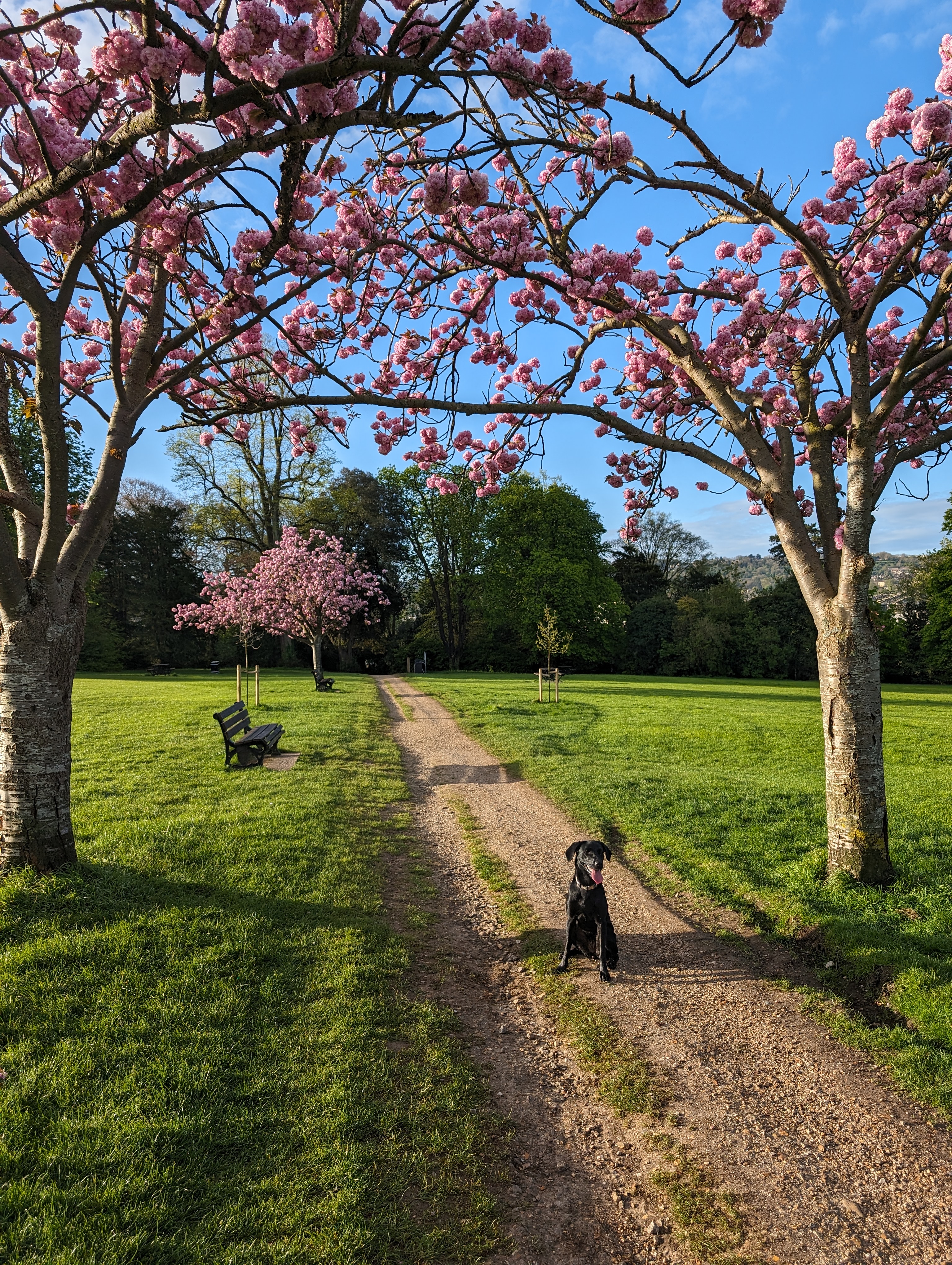As a resident in Bath for the past three years, Victoria Park has become my cherished third place. Living just a stone’s throw away, it’s become something of a sanctuary for me. As a remote worker, it’s that vital space away from the treadmill of the 9-5.
Walking through Victoria Park has somehow woven itself into my daily existence. For locals like me, it’s where community flourishes and personal connections bloom.
A Hub of Community Life
Most mornings, I’ll walk my dog through the park’s winding paths. It’s big enough that there’s a few routes to take from home. If I’m early, I can really take in all that the flora and fauna has to offer. If it’s a late walk, I’ll often see the park transform into a vibrant social space.
I’m not a local, so it’s great to bump into fellow dog walkers. For those I’ve come to recognise, we share stories and local news. The newer faces still result in great exchanges. There’s warm greetings, and the focus is typically on how beautiful my dog is. I’m biased, but everyone says she’s a cracker. The best Labrador around.
These daily encounters have evolved for me. What started as casual nods became more meaningful interactions. The isolation that characterises city living melts away. The simple chat about our four-legged companions builds bonds that go beyond the park’s boundaries. During the grip of the pandemic, this is something I soon realised I valued a lot.
A Victorian Vision for Connection
The park’s creation was part of a broader Victorian public park movement. Edward Davis’ 57 -acre design aimed to enhance Bath’s appeal. This was as its popularity as a spa town began to wane.
It was inaugurated in 1830 by an 11-year-old Princess Victoria, seven years before she would become queen. Today, it holds the distinction of being the first park in England to bear her name. The park’s layout is thoughtful. It reflects the Victorian ideal of combining natural beauty with social purpose. Victorian life had fewer recreational options. So building connections was always part of the plan. To this day, it still fulfils that very purpose.
A Space for Wellbeing
Victoria Park serves as more than just a green space. It’s become a beacon for mental health and wellbeing in our community. The park’s role in supporting mental health became especially apparent during the pandemic. It offered a crucial escape and breathing space for many. I unknowingly sought refuge here before becoming a dog owner. Now I have another reason to enjoy it.
It’s a place where you can enjoy the simple pleasure of reading a book on a park bench or beneath a tree. It’s big enough that you can watch the world go by without intruding on anyone’s day. It gives locals a form of meditation that’s increasingly rare in our fast-paced world.

A Hub of Activity and Connection
The park pulses with physical activities on any given day. The Sunday runners trace their paths around the park’s perimeter. And you’ll see runners all day, all week. For these guys, the lush green beats the treadmill, every time.
You’ll find a group of men throw kettle bells around morning midweek, under the pavilion. They were once strangers, now they appear to be friends. I often have a chat with them as I walk by. I should really consider getting involved soon.
The park is an ideal space for recreation and sports. We see others in pursuit of their fitness goals. The park creates an inspiring environment of that shared purpose and motivation.
But it’s not all about exercise. The park’s café provides a perfect spot for connection. It offers a warm retreat where conversations flow as freely as the coffee. The connected allotments are another convivial spot. Plot owners chat and put the world to rights. And locals can freely get involved on Tuesdays and Saturdays.
A Family Haven
When my family visits, Victoria Park transforms into an adventure playground. The varied landscape becomes a natural educational space for my young half brothers. We spot squirrels. We count ducks. We identify trees. Every visit offers new discoveries. There’s the thrill of the big play area too. I take absolutely no shame in saying I’ve got fully involved with my brothers at the ever-youthful age of 33. All in all, the park is responsible for some of my most treasured personal experiences.
One of the most magical features is the park’s role in hosting hot air balloon launches. Dozens of people gather to watch these gentle giants take flight on a quiet, still morning. It’s these shared experiences that strengthen our sense of cultural identity and community spirit.
Bath’s Botanical Heritage
One of the park’s most remarkable features is its botanical gardens. The gardens were established in 1887. They represent the Victorian passion for horticultural discovery and education. The park’s founders had ambitious plans. They saw it as the major arboretum of western England. Unfortunately, that mantle is probably taken by Westonbirt (which is also incredible).
But that doesn’t take away from the magic of these gardens. They’re still true to the original vision. There’s spring-fed streams, stone bridges, and the Temple of Minerva. This was was relocated here in 1926 from the British Empire Exhibition.
Community Evolution
The park’s management history reflects changing times in Bath’s social fabric. It was initially managed by a committee of wealthy Bath inhabitants. Then it transitioned to municipal control in 1921. This shift mirrors broader social changes in British society. We’ve seen more public-reclaimed spaces across the UK at least in the 20th century. And those changes have truly made the park a people’s space.
Victoria Park’s Contemporary Significance
Victoria Park is a shining example of preserving and nurturing our public spaces. It’s more than just a park. It’s a vital part of the community. It helps foster connections between neighbours. It provides a space for physical and mental wellness. And it’s a green refuge close to an urbanised city centre.
The park’s position, overlooked by the iconic Royal Crescent, creates a perfect harmony between Bath’s architectural heritage and its green spaces. As my third place, it connects me to my community. It does the same for generations of Bath residents.
These people have found solace, joy, and connection within its bounds. I can find myself walking my dog past the Victorian monuments. Or I could watch my family play in the shadow of trees planted nearly two centuries ago. Either way, I’m part of a continuing story of community and heritage that makes Bath unique.




Comments